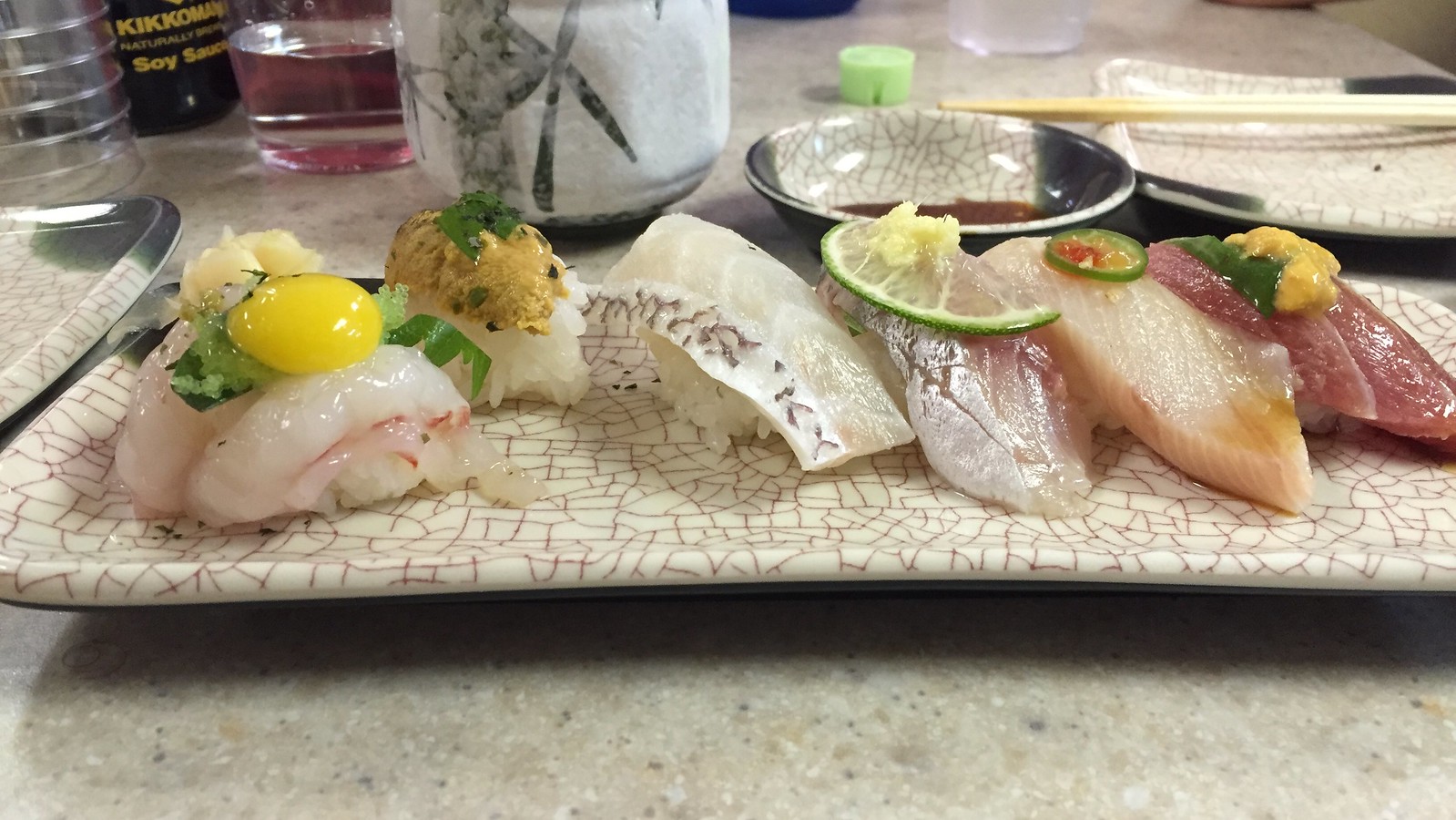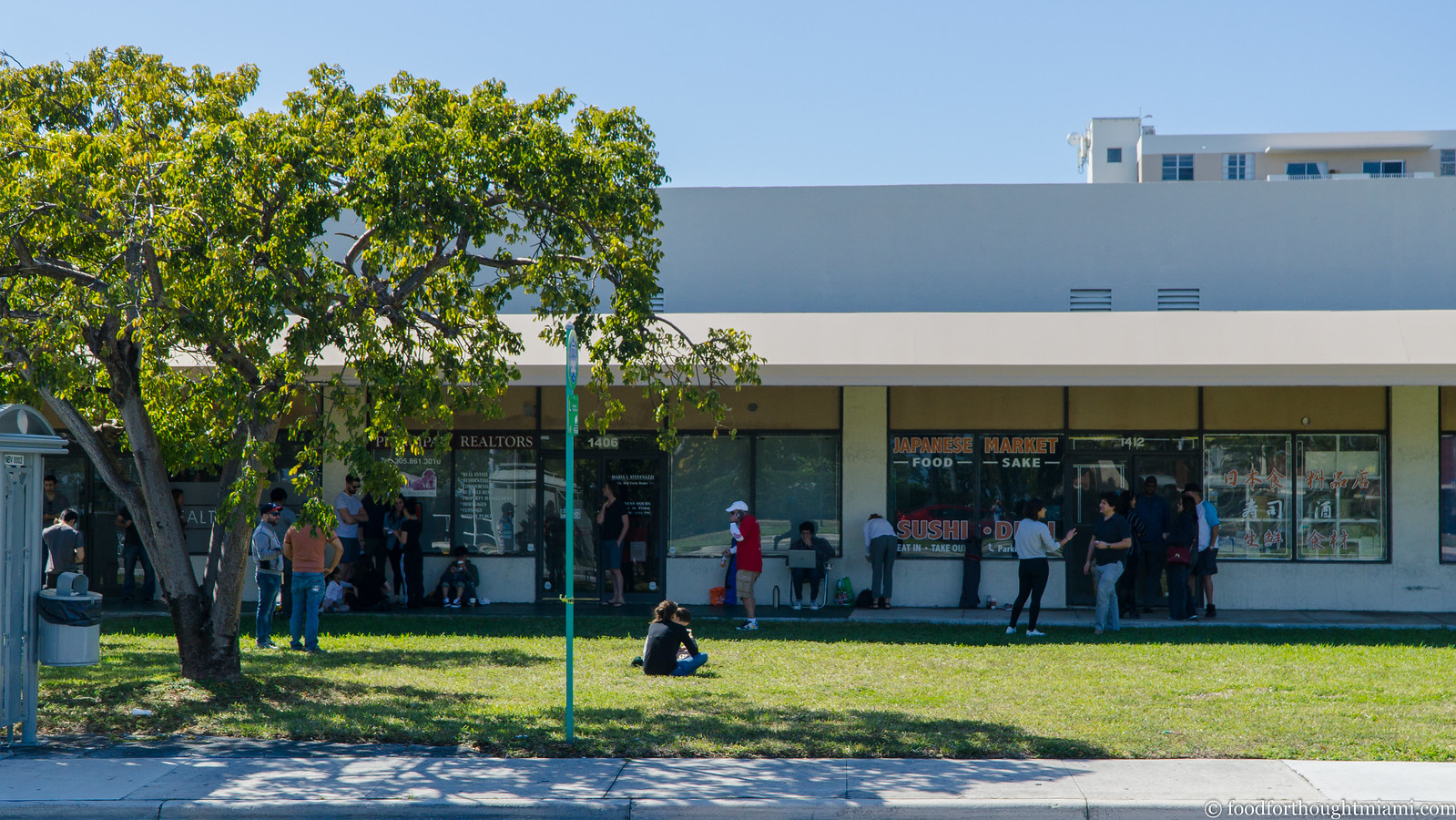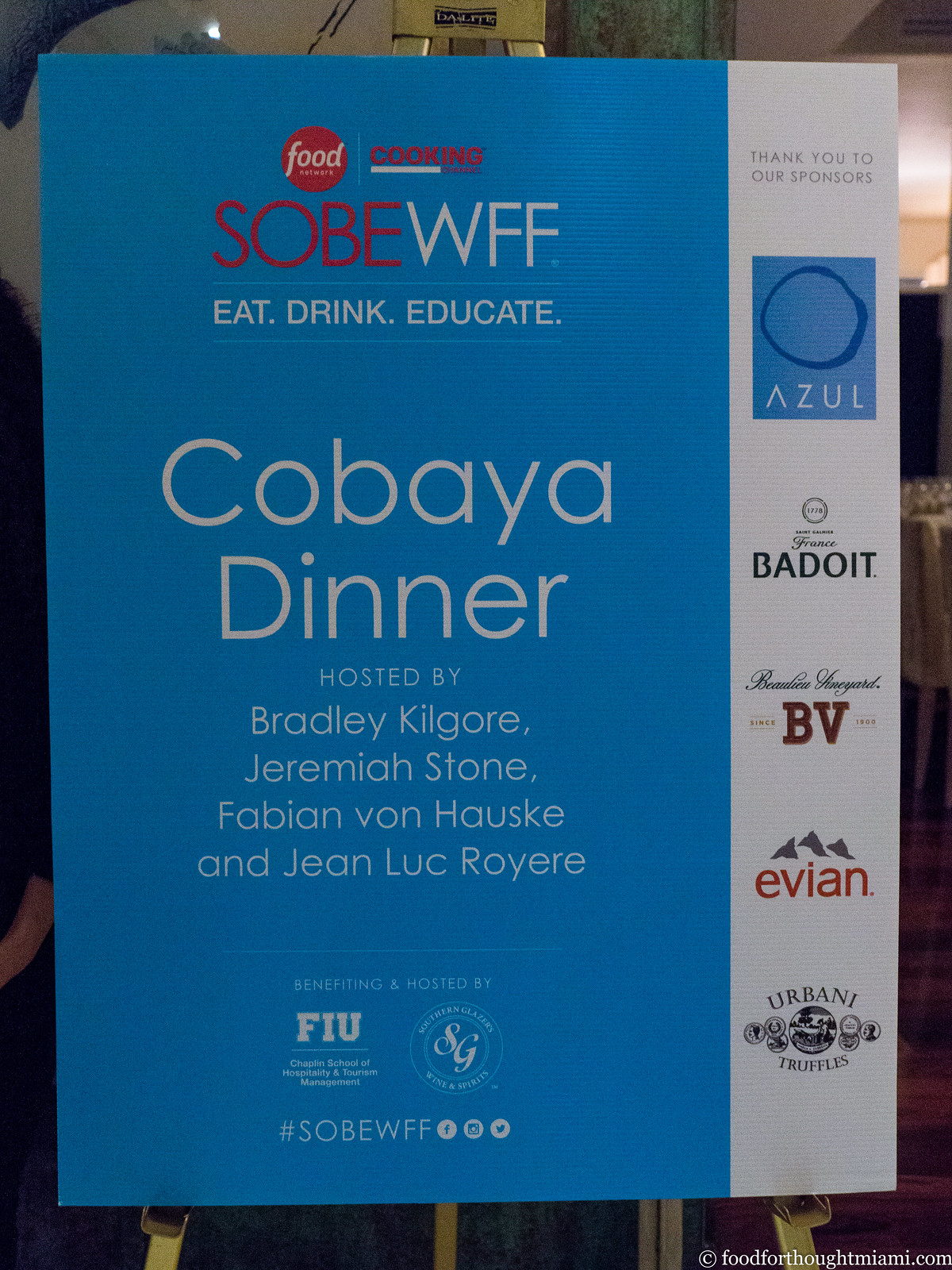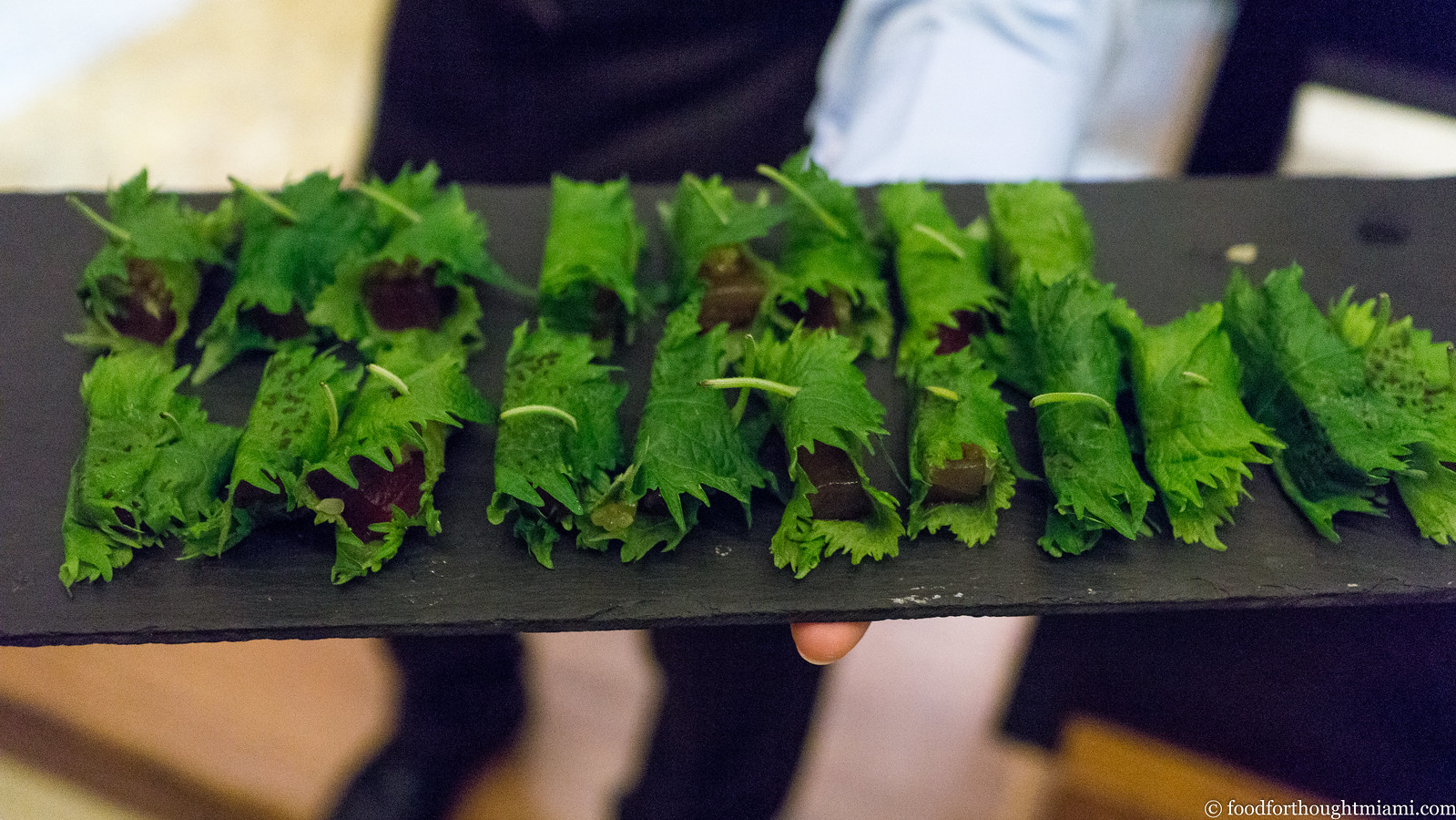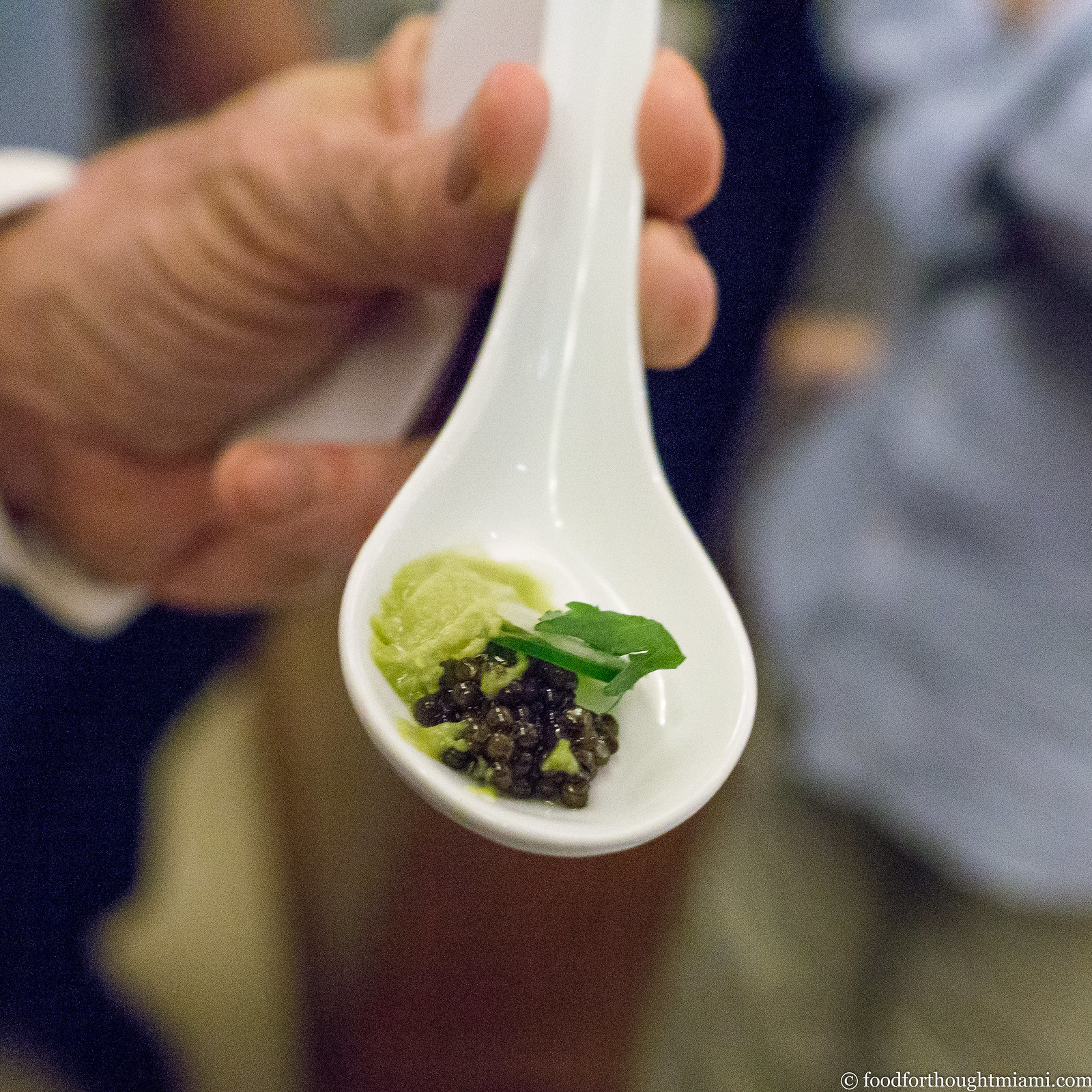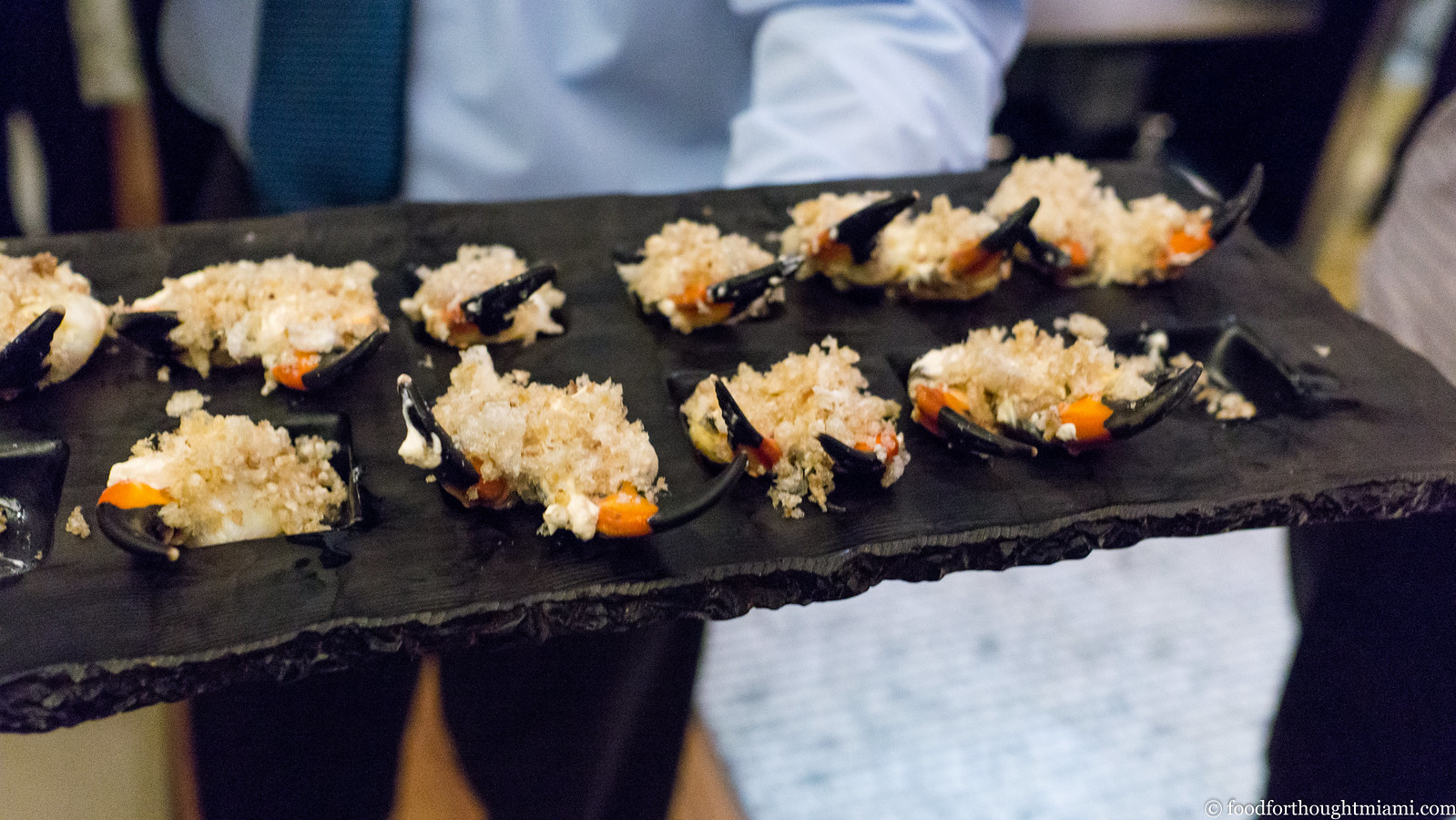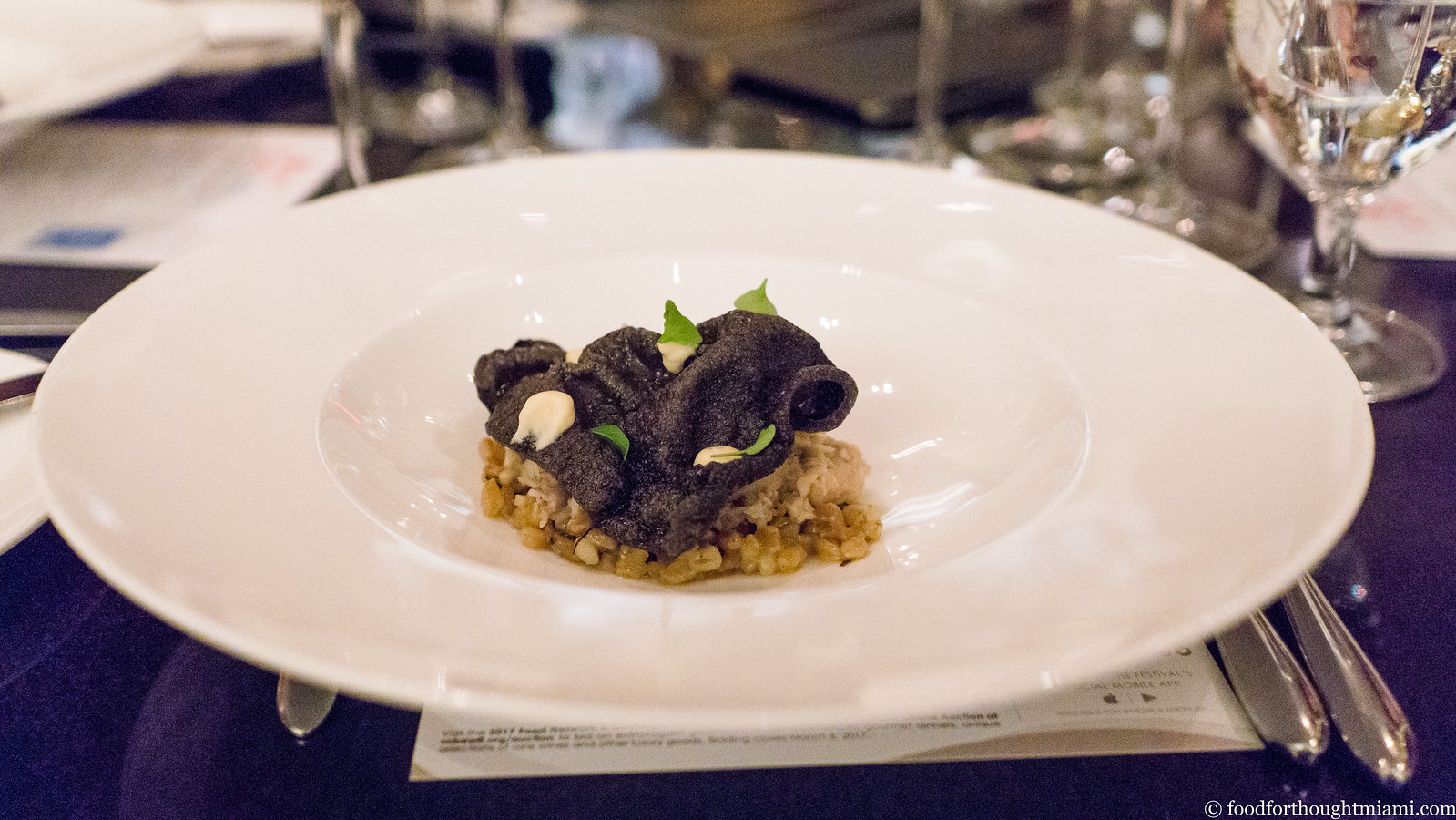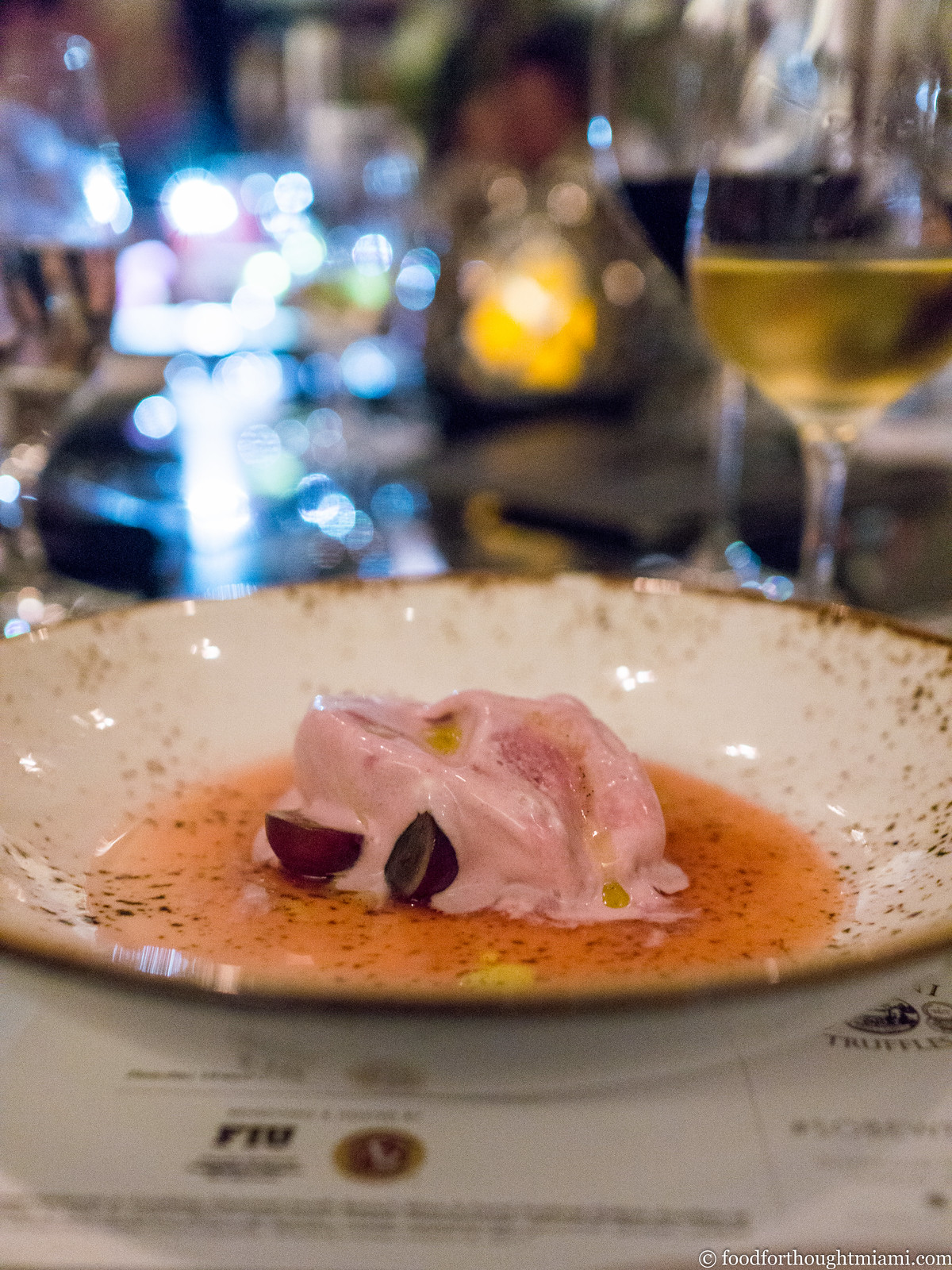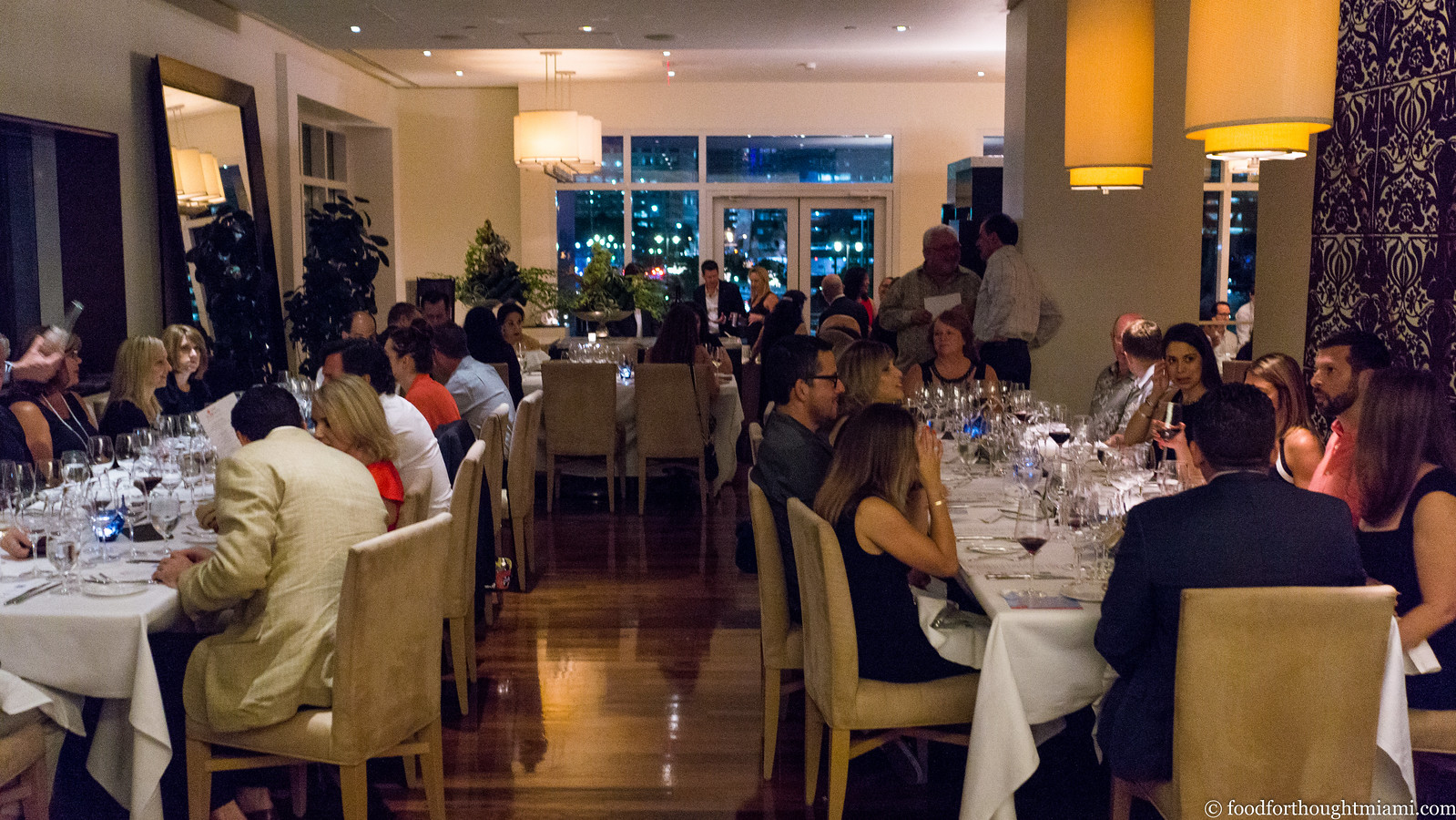It was a little more than five years ago that we did a
Cobaya dinner at
Azul restaurant in the
Mandarin Oriental Hotel which included a special guest: Andrew Zimmern of the TV show
Bizarre Foods, who ended up
featuring the dinner on the show.There was another special attendee that night, but he wasn't very well known at the time, and he wasn't in the dining room – he was in the kitchen. Joel Huff's sous chef at Azul was Bradley Kilgore, who had come to Miami to work at Azul after spending time with some of Chicago's finest:
Alinea, Laurent Gras's L2O,
Boka.
Brad was actually part of what drew us to Azul in the first place, with his
online updates of what was happening in the kitchen. Zimmern has a pretty keen eye for talent too, and even though Brad was third in command in that kitchen, by the end of the night Zimmern had bestowed a nickname on him: "Wall Street," for the
Gordon Gekko-esque slicked-back look he sported at the time.
Eager to see what Brad could do on his own, several months later a few of us organized a one-off dinner at Azul where we gave him free rein.
He killed it – his "
anatomy of a suckling pig" remains a benchmark for me when it comes to nose-to-tail utilization. Shortly afterwards, his career path took him away from Azul: a brief gig as head chef at a tough location on Key Biscayne, then to a much better gig at the
St. Regis Bal Harbour for Jean-Georges Vongerichten's J&G Grill, then, nearly two years ago, to open his own place in Wynwood:
Alter.
 |
| Brad Kilgore a/k/a "Wall Street" circa 2012 |
At Alter, all of his potential has been fully realized. The food is some of the best I've ever eaten in Miami, and recognition has been both voluminous and well-deserved: last year Brad was named one of
Food & Wine magazine's
Best New Chefs; and his restaurant, Alter, was a semifinalist for the
James Beard Foundation Best New Restaurant award (a national category), and was included in
Eater's list of the
21 Best New Restaurants in America.
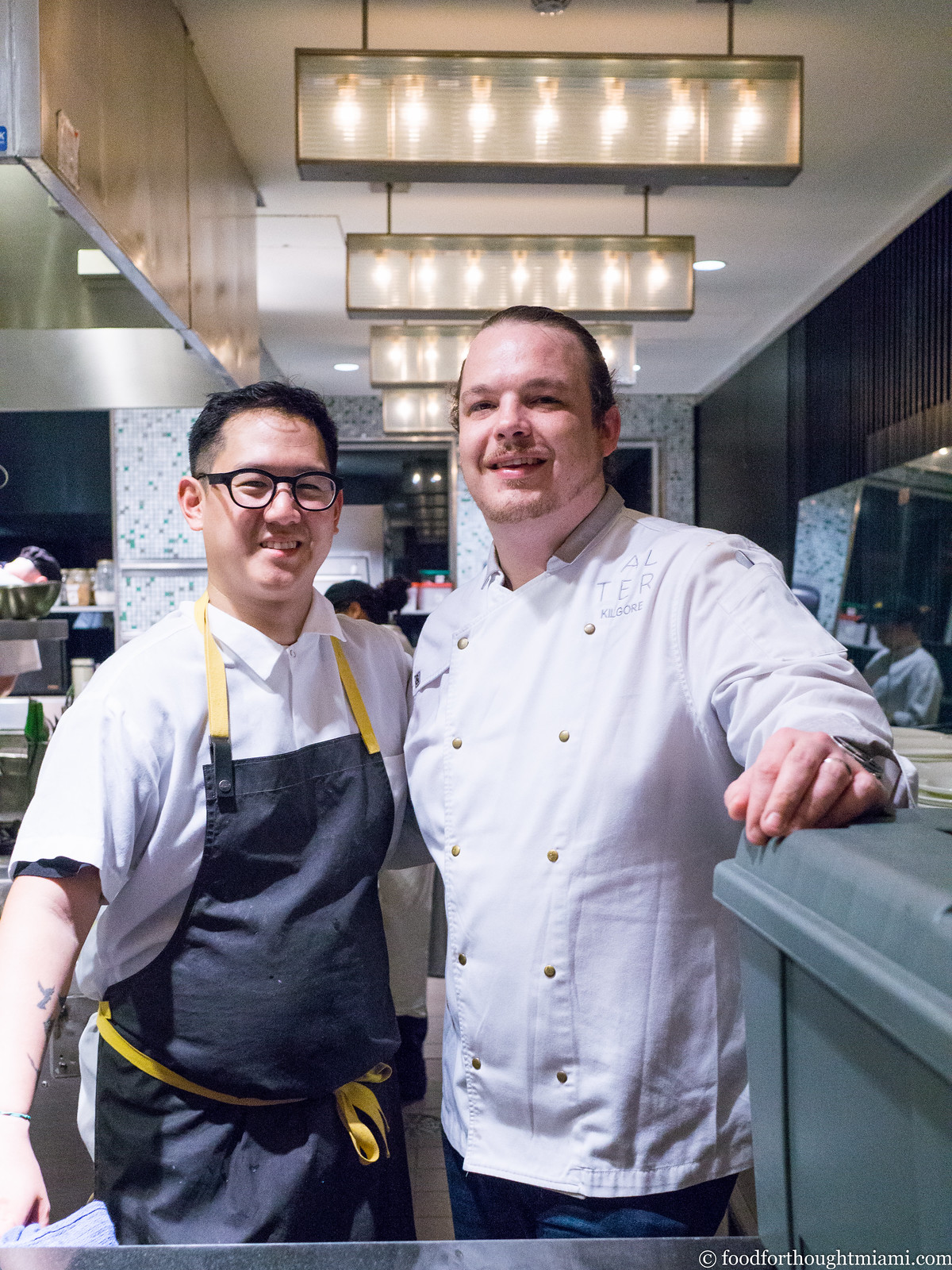 |
| Jeremiah Stone and Brad Kilgore, circa 2017 |
So for the third Cobaya dinner we've done in conjunction with the
South Beach Wine and Food Festival, we orchestrated something of a reunion, bringing Brad back to Azul to cook for an evening. Kilgore looked pretty comfortable back in the kitchen where it all started for him in Miami, and even slicked his hair back for the occasion.
Joining him were the Mandarin's head chef, Jean-Luc Royere, and a couple New York City chefs whose careers have followed a very similar trajectory of late: Jeremiah Stone and Fabian Von Hauske, of
Contra and
Wildair.
Stone and Von Hauske were also included in that 2016 F&W list of
Best New Chefs; their new restaurant, Wildair, was a Beard Best New Restaurant finalist, and was on that same Eater Best New Restaurants list (their first restaurant, Contra, was
on the list in 2014 when it opened as well).
[1] Kindred spirits.
(You can see all my pictures from the dinner in this
Cobaya SOBEWFF 2017 flickr set).
Each of the teams contributed one of the passed appetizers which made their way around the room as guests arrived. From Royere, tranches of tuna cured in kombu and wrapped in fragrant shiso leaves, concealing tiny finger lime sacs that provide a citric pop as you chew. From Kilgore, a spoon of greenish-hued olive oil "snow," garnished with green apple, a sliver of serrano chili, and a dollop of caviar – a lot of flavor in one bite.
[2] And from Stone and Von Hauske, a local specialty – stone crab claws – garnished in an unorthodox way, with smoked pepper and feathery flakes of chicharrones.
[3]

Once everyone was settled into their tables, dinner got started with Stone's course: raw shrimp and lobster, hidden away under a mosaic of thinly sliced butternut squash and sage leaves. It was an odd dish, and I say that with a fondness for odd things. The seafood was sweet and soft and fatty, the squash – still raw, or if cooked, just barely – was firm and earthy, and the sage's strong, camphor aroma cut its way through every bite.
Brad followed with a super-soigne version of an izakaya staple: kama, or fish collar. Here, he used kanpachi, a smaller variety of amberjack, which he smoked and flavored with koji miso (Brad told me it was quite a process to gather enough collars for the 80+ covers at our dinner). The collar meat may be the most lush and fatty on the fish, and here it came out all supple and silky, like a cross between smoked sable and Nobu's famous miso cod. Even better, he topped each plate with a big, puffy black truffle cracker, made with tapioca and a
pound of
Urbani truffles. I was dubious that the flavor would carry through in that format, but I guess it works out just fine if you use enough truffles. It was a great dish.
Royere's Azul crew had been tending to slabs of beef on Korin binchotan charcoal grills for a good part of the evening, and we finally got to see the result. Fat, crimson slices of lush Japanese A5 wagyu beef were anointed with a miso bordelaise, and plated with roasted maitake mushrooms, a purée of golden caramelized onions, and a light smoked potato espuma. My only disappointment was that after a week of eating while on vacation (we got back from Paris the night before the dinner), I lacked the appetite to finish it.
Dessert was turned over to Fabian Von Hauske, who handles the pastry chef responsibilities at Contra and Wildair. Like Stone's course, this was odd, in a good way: halved grapes and a sweet-tart grape soup (not quite viscous or sweet enough to be called a syrup), with a dollop of a rich, pink-hued coconut and grape semifreddo, simultaneously fruity and creamy and tart, dappled with some olive oil for a little extra richness.
There was something particularly fitting about having Brad back in the kitchen at Azul, where he started in Miami and where Cobaya had its fifteen minutes as well (OK, not quite that, maybe ten minutes of airtime). The only one missing was Zimmern (who cooked for our first two Cobaya / SOBEWFF collaborations), though he
made his own visit to Alter a couple weeks later.
It was even better to have the wonderfully creative talents of Jeremiah Stone and Fabian Von Hauske sharing that kitchen, along with our gracious host, Jean-Luc Royere, and the rest of his crew at Azul (some of whom, at least in the front of house, were veterans of our Cobaya dinner from five years ago). Thanks as well to Jeffrey Stambor, director of winemaking at
Beaulieu Vineyards, who supplied the pairings for the evening, to the crew at SOBEWFF, and as always, to the guinea pigs whose interest and support make these kind of events possible.


